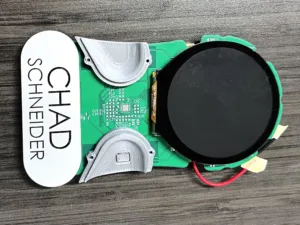The BeagleV-Ahead vs Raspberry Pi: A Deep Dive Comparison

In less than a lifetime, we went from computers that filled an entire room to devices that fit in our pockets. While ‘pocket-sized devices’ may conjure images of modern smartphones, what I’m really talking about are single-board computers better known as micro-controllers. Single-board computers are devices that have all the functionalities of a full computer but on a single circuit board. You might be asking what’s the point of a single-board computer, why not just use a laptop? Depending on your need, there may be price or size constraints to consider, and laptops can be expensive.
Today, the most well-known name in single-board computing is the Raspberry Pi, a device that is used across many engineering disciplines. They can be used by Middle School students learning to code, all the way up to industry professionals creating custom solutions for clients. Unfortunately, this does create high demand for the Pi, which can make it hard to purchase from online retailers. Luckily some competitors like BeagleBoards have stepped up to create the BeagleV-Ahead, an entirely open-source board that is set out to dethrone the Raspberry Pi 4B. Will it fall flat or rise to the challenge?
Raspberry Pi & BeagleV-Ahead At a Glance...

Core Differences That Matter
Architecture & Processing
The heart of each board tells a different story. The BeagleV-Ahead features the quad-core Xuantie C910 running on RISC-V architecture, while the Pi 4B uses ARM’s quad-core Cortex-A72.
What this means for you:
- RISC-V offers complete open-source freedom
- ARM provides established ecosystem support
- Both deliver comparable processing power
Pro tip: While ARM currently has broader software support, RISC-V is gaining momentum in the development community.
Memory & Storage Solutions
Here’s where things get interesting. The BeagleV-Ahead comes with:
- 16GB built-in storage
- SD card expansion option
- 4GB LPDDR4 memory
While the Raspberry Pi 4B offers:
- SD card only storage
- 4GB LPDDR4 memory
- USB storage expansion options
Why it matters: Built-in storage means faster boot times and immediate usability. The Pi’s SD card requirement adds an extra step but offers more storage flexibility.
Initial Set-Up
Both boards support essential connectivity, but with key differences:
BeagleV-Ahead:
- Single Micro-USB 3.0 port
- External WiFi antenna (2.4/5GHz)
- Dual CSI camera ports
Raspberry Pi 4B:
- Two USB 3.0 ports
- Built-in WiFi antenna
- Single CSI port
- Dual micro-HDMI out
Design Note: The Pi’s built-in antenna and dual display support could be crucial for certain medical device prototypes.
Cost & Availability
Let’s talk real numbers:
BeagleV-Ahead:
- $150 retail
- Readily available at large retailers
- Includes storage
- Limited accessories needed
Raspberry Pi 4B:
- $55 MSRP
- Often scarce
- Requires SD card
- Extensive accessories available
Documentation & Support
Understanding your support needs is crucial.
BeagleV-Ahead:
- Growing Documentation
- Direct manufacturer support
- Emerging community
- RISC-V reference materials
Raspberry Pi 4B:
- Extensive documentation
- Massive community support
- Countless tutorials
- Proven track record
Key Insight: While the Pi’s documentation is more extensive now, BeagleV-Ahead’s open-source nature could lead to rapid community growth.
Real-World Applications
When to Choose BeagleV-Ahead
You’ll love the BeagleV-Ahead if:
- Your project needs computer vision capabilities
- Open-source architecture is a priority
- Built-in storage is essential
- You’re willing to work with emerging technology
Perfect for: Advanced medical imaging systems, dual-camera analysis tools, and projects requiring complete architectural control.
When to Choose Raspberry Pi 4B
The Pi 4B shines when:
- You need extensive community support
- Your project requires dual displays
- USB connectivity is crucial
- You’re working with established ARM architecture
Perfect for: Medical device prototypes, monitoring systems, and projects needing rapid development.
Making Your Choice
So, how does the BeagleV-Ahead hold up?
Like most things: it depends. If you are a beginner and have not had much experience with single-board computers, it might be better to go with the Pi. The Raspberry Pi’s official website has well-documented guides for new users. There is also a large community ready to answer any questions or problems new users may be facing. The BeagleV-Ahead is still in its early stages and is not as well documented as the Pi is. However, in instances when the Pi isn’t available, the BeagleV-Ahead is a great alternative. Particularly if you are more experienced and looking to try out the new Risc-V technology, BeagleBoard may be better for you. Everyone has their own specific requirements to consider, so we encourage you to use this guide to look at all aspects of both boards.
Choose the BeagleV-Ahead if:
- You need dual camera support
- Built-in storage is crucial
- Open-source architecture matters
- Immediate availability is important
Choose the Raspberry Pi 4B if:
- Community support is essential
- Budget is tight
- Dual display output needed
- Extensive USB connectivity required
Need help choosing the right board for your next device prototype? Let’s talk about your specific needs!




